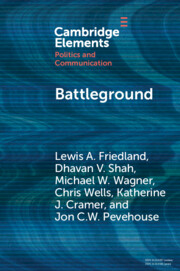Element contents
Battleground
Published online by Cambridge University Press: 17 February 2022
Summary
Keywords
- Type
- Element
- Information
- Online ISBN: 9781108946780Publisher: Cambridge University PressPrint publication: 04 August 2022
References
- 11
- Cited by



